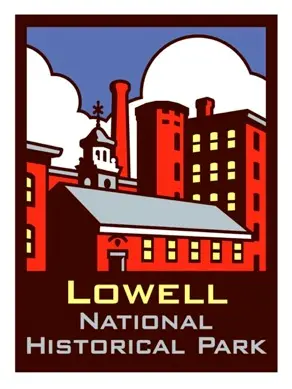On the Move: An Introduction to Immigration
Introduction: This lesson introduces students to the concept of immigration. Level: Elementary, grades 3 - 5 Time: one class period or approximately one hour.
- Lesson Preparation
- Prior Knowledge Required
- Background Information
- Vocabulary
- Anticipated Student Preconceptions/Misconceptions
- Frameworks Connections
- Guiding Questions
- Objectives
- Activity
- Assessment
- Differentiated Suggestions
- Adapting the Activity for Other Grades
- Bibliography
- Rubric
PriorKnowledgeLesson Preparation
Poster boards or chart paper with questions written at top
Colored Markers
Reference materials for introduction to activity
Historically, people came to America from many countries.; Immigrants and refugees continue to come to America today. ;
BackgroundBackground Information
See “Immigration to America” essay and “Immigration Time Line”
VocabularyVocabulary_Imm
Immigration – the process of entering a new country with the purpose of settling there
Immigrant – a person who moves to a new country
Migrate - to move from one region or country to another, often to seek work or other economic opportunities
Refugee - someone who seeks a safe place or takes refuge in a different country, especially to avoid war, persecution, or natural disaster
Region – a section or part of a country or territory
Famine – food shortage that causes widespread hardship and starvation
AnticipatedAnticipated Student Preconceptions/MisconceptionsAnticipated_Imm
Students may believe all immigrants from one country settled in a particular area of the United States.; They could also have stereotypes about certain groups. They may believe immigrants do not want to learn English or that immigrants take jobs away from native-born Americans.
FrameworksFrameworks ConnectionsFrameworks_Imm
Massachusetts, Grade 4:
Regions of the US:
4.16 Identify major immigrant groups that live in Massachusetts and where they now live in large numbers (e.g., English, Irish, French Canadians, Armenians, Greeks, Portuguese, Haitians, and Vietnamese).
History/Geography:
4.1 Use map and globe skills to determine absolute location of places.
New Hampshire, Grade 3-4:
Geography: SS:GE:4:4.2: Describe the types of historical patterns of human migration, e.g., chain migration or slave migration (Themes: C: People, Places, and Environment, I: Patterns of Social and Political Interaction)
SS: GE:4:4.3: Evaluate the effects of migration on the characteristics of place, e.g., cultural awareness of food choices. (Themes: E: Cultural Development, Interaction, and Change)
Common Core
Speaking and Listening Standards K-5
Grade 4: 1:; Engage effectively in a range of collaborative discussions (one-on-one, in groups, and teacher led) with diverse partners on grade 4 topics and text, building on others’ ideas and expressing own clearly.
C: Pose and respond to specific questions to clarify or follow up on information, and make comments that contribute to the discussion and link to the remarks of others
D: Review key ideas expressed and explain their own ideas and understanding in light of the discussion
GuidingGuiding QuestionGuiding_Imm
Students will be able to: * Identify different groups of people that came to America. * Discuss why immigrants settle in certain areas.ActivityActivity Activity_Imm
* Read aloud short passages about immigration to build and activate background knowledge and information about immigration. (The bibliography lists suggested resources. You may also share the background information "Immigration in Lowell.")
* Review/discuss vocabulary and “poster questions” (see below) to ensure students are prepared to participate in the lesson.
* Students will participate in carousel brainstorming, during which they rotate around the classroom in small groups, stopping at various stations for a designated amount of time. While at each station, students activate their prior knowledge of immigration topics through conversation with their peers. They post their ideas at each station for all groups to read.
1. Set up stations in four corners of classroom, with one of the following questions on each poster board/chart paper:
* Where do people who live in America come from?
* Why did/do people move to America?
* What factors influence where immigrants choose to settle in America?
* How might immigrants feel when they arrive in America?
2. Divide students into four groups that will rotate around the room. Each group should have a designated recorder and presenter. Give each group a different colored marker to help track of their responses.
3. Give each group about 3 - 5 minutes to brainstorm and write their responses to each question. When time is up, groups rotate to the next station in clockwise order. Numbering stations and using a timer makes it easier to manage rotations.
4. Continue until each group has answered all four questions.
5. Before leaving the final station, have each group chose three to five ideas from their whole chart to share with the entire class.
* Teacher should facilitate discussion with whole class as each group shares the ideas they selected.
* Identify places of origin on maps or globes.
* Divide reasons for immigration into pushes (from their homeland) and pulls (to come to America).
* Discuss the influences of job opportunities, as well as, geography and chain migration on where immigrants settle. Encourage students to empathize with young immigrants who have left their homeland to come to a new country.
* Clarify misconceptions throughout the discussion.
AssessmentAssessmentAssessment_Imm
- Write two journal entries from the perspective of an immigrant. The first entry should be about your decision to leave your homeland and the preparations you need to make to go to America, and the second should detail what you do when you arrive and how you feel about being in America.; Make sure to include why you came, where you settled and why and how you feel now that you are here.
- Write a letter to a friend or family member in your homeland describing your new life and persuading them to join you.; Make sure you include why you settled in your new neighborhood and how you feel now that you have settled there.
Differentiated SuggestionsDifferentiated_Imm
Group students by mixed abilities.; You may want to assign jobs according to their strengths (recorder, presenter, timer…)
AdaptingAdapting the Activity for Other GradesAdapting_Imm
You can adjust this activity for higher grades/levels by using higher level resources for background information and substituting more complex questions at the four stations – for example:
- Should our government control who comes into our country? Why or why not?
- What steps do immigrants have to take/rules to follow in order to come to our country? What type of additional steps would you add to immigration requirements?
- How do world politics, economics and immigration policies affect immigration today?
- What makes immigrant groups settle in certain regions (include economic, political and geographic influences)?
BibliographyBiblio_imm
Denenberg, Barry. So Far From Home: The Diary of Mary Driscoll, an Irish Mill Girl. New York: Scholastic, Inc., 1997. Fictional diary account of a fourteen-year- old girl's journey from Ireland in 1847 and of her work in a mill in Lowell, Massachusetts. Grades 4-8. (Pages 145 – 164 provide good historic background for this lesson.)
Freedman, Russell. Immigrant Kids. New York: Puffin Books, 1980. Photographs and text that tell about the life of immigrant children growing up in industrial America. Photographs chronicle their lives at home, school, work and play through the late 1800’s to the early 1900’s New York City. Grades 4–8 and up. (Pages 4 – 14 provide good background information for this lesson.) Levine, Emily. If Your Name Was Changed at Ellis Island.; New York: Scholastic, Inc., 1993.;; This book describes the immigrant experience at Ellis Island when it opened in 1892 as a center for immigrants coming to live in America. Grades 4–8. (Pages 6 – 20 provide good background information for this lesson.) Avi. The Escape From Home and Beyond the Western Sea. 2 volumes. New York: Orchard Books, 1996. Fictional account of trials and hardships first in Ireland during the famine, then during voyage to America and last in the mills of Lowell. Grades 5-9 and up. (Volume One describes conditions in Ireland and reasons for emigrating.; Volume Two describes life in America, Lowell in particular)
Rubricrubric_imm
Adapted from MA Department of Elementary & Secondary Education “America’s Salad: The Story of Immigration to Massachusetts.”
Print the entire lesson plan:On the Move: An Introduction to Immigration
What is immigration?; Why do people come to America and settle where they do?
ObjectivesObjectives Objectives_Imm


